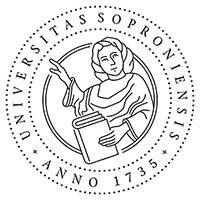The Library is a Sign about the Man
Abstract
Behind the set of signals used by library, more is hidden than practice of operation. Any sign of the profession can be seen as an operation-oriented limited code or a barely limited farm of communication. The signals are methods of expression towards society, about itself The signs connected to the activity fields of the everydays at the same time just as the message created for the cmnmunicating community, the user commumity was discovered in them. The examination of library readings validated the idea following from our hypothesis that the sign of the library are understood by those who strive to understand its characteristics and those who, moving about in the medium of signs, do not only approach signs from the end result, do not only read the messages of the library in reserve order, but who see signs are pre-written replies. The set of signs used by the library simplifies messages, contacts into codes, while, at the same time, the codes and signs offer contacts between man and library.
References
Berger, Peter L.- Luckmann, Thomas (1998): A valóság társadalmi felépítés. Tudásszociológiai értekezés. Jószöveg Műhely, Budapest.
Johnson, Mark (1987): The Body in the Mind: the Bodily Basis of Meaning, Imagination, and Reason. University of Chicago Press, Chicago. doi: https://doi.org/10.7208/chicago/9780226177847.001.0001
Peirce, Charles Sanders (1975): A jelek felosztása. In: A jel tudománya. Gondolat, Budapest.
Pruzan, Peter (1999): From Control to Value-Based Management. In: Applied Ethics in Management. Towards New Perspectives. Springer Verlag. Berlin; New York. doi: https://doi.org/10.1007/978-3-642-60151-4_17
Sándor Klára (2002): A nyelvi arisztokratizmus alkonya. In: Mobilközösség – mobilmegismerés. MTA Filozófiai Kutatóintézete, Budapest
Downloads
Published
Issue
Section
License
Copyright (c) 2012 Vörös Klára

This work is licensed under a Creative Commons Attribution-NonCommercial-NoDerivatives 4.0 International License.








